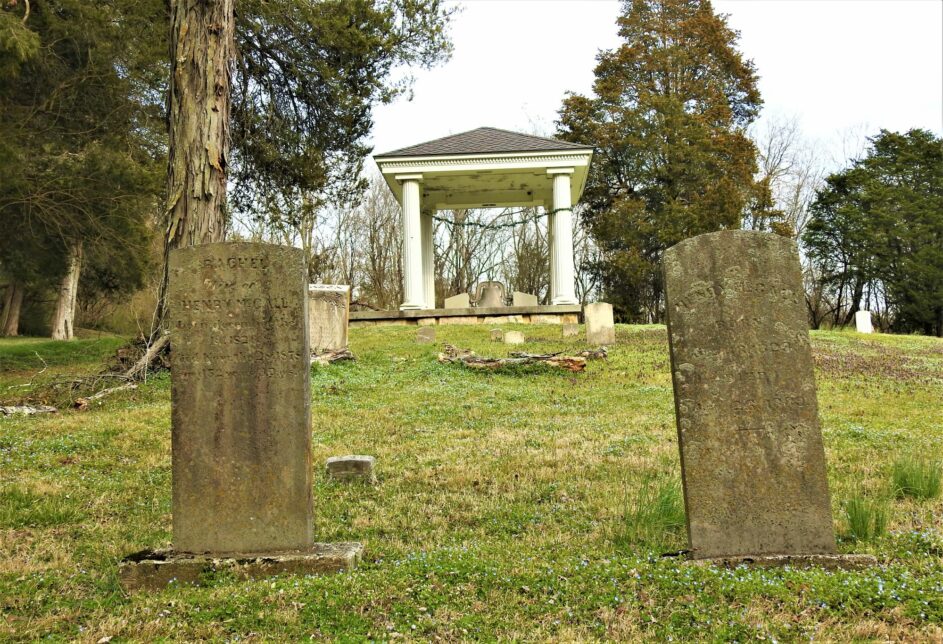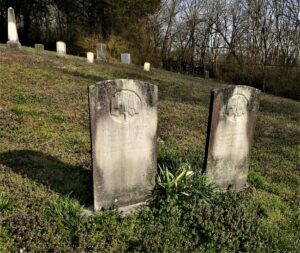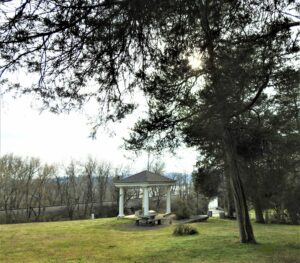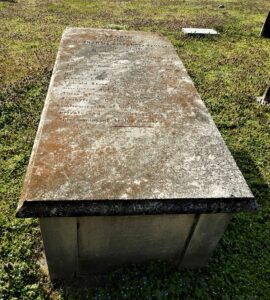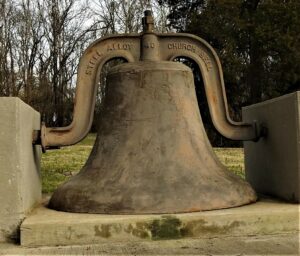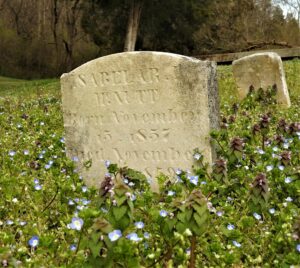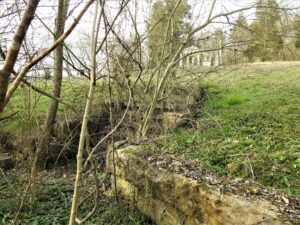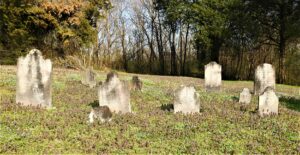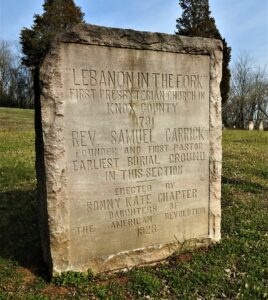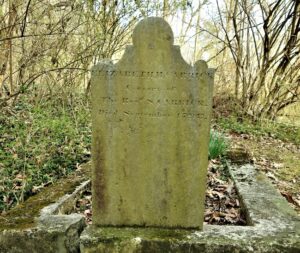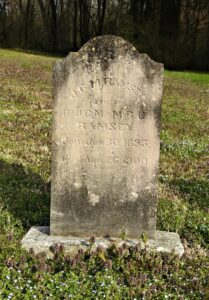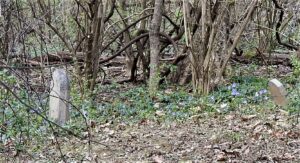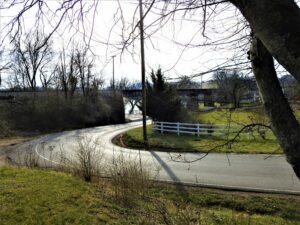It sits unassumingly on a hill in East Knox County overlooking the Holston River just before its junction with the French Broad. If traveling too fast along Asbury Road to a question mark of a hairpin curve under a railroad trestle, you could easily drive right past it not realizing what, and who, rests on the rise above.
Before Tennessee was a state, the Lebanon in the Fork Cemetery was founded here in 1791 alongside the Lebanon in the Fork Presbyterian Church. The church was the first organized church in Knox County on land donated by one of the county’s earliest European settlers, Col. Francis Alexander Ramsey, of Revolutionary War and Ramsey House fame. He is buried here along with two of his three wives and his son, J.G.M. Ramsey, confederate agitator and author of “The Annals of Tennessee,” as well as other members of the extended Ramsey family.

Elizabeth Carrick’s grave. Immediately behind her is Jacob Hagar. Jan Dickens wonders who he was and why buried so close to her?
Of particular note, high up on the property on the edge of the woods lies the grave of Elizabeth Carrick. She was the wife of the Rev. Samuel Carrick, who started the church, and her resting place is the oldest known legible marked grave in Knox County. She died in 1793, and her body was rafted across the Holston to the cemetery by the other women and the enslaved of the community. Seems the menfolk had headed out to the western edges of Knoxville to do battle with the Chickamauga Cherokees. Samuel returned home to find his “consort” – as engraved on her headstone – no longer among the living. He later founded First Presbyterian on State Street and is buried there.
The original church on the property was constructed of rough-hewn logs. It was replaced in 1903 by a clapboard structure with Doric columns and stained-glass windows that burnt to the ground in late 1981. Though there were plans to rebuild at the time, those plans never came to fruition. The columns that survived the fire now form a sort of pergola surrounding the salvaged steeple bell.
The cemetery made it on the National Register of Historic Places in 2010 and is under the same management as Historic Ramsey House. Jan Loveday Dickens, education chair on the Ramsey House board, is particularly invested in finding more historical documents on the cemetery, especially as so many markers have been worn down over time.
“I’ve spent hours there,” Dickens said. “I’ve plotted every stone and numbered them. I’ve charted how all the relationships worked, because most of those buried here, in some way, are connected to the Ramsey family.”

A modern stone for a Revolutionary soldier.
Dickens said there are many intriguing stories among the less famous buried in the 70 odd graves. For one, there is a modern, standard issue military headstone commemorating Revolutionary soldier Jeremiah Jack. While historical documents confirm his burial there, the site of his grave is not known.
“He came down the Nolichucky to the French Broad by canoe to hopefully exchange clothing for corn with the Cherokee, who were not particularly inclined to do it,” Dickens said, explaining that an intervention by “Beloved Woman” Nancy Ward helped complete the transaction. Eventually Jack owned 400 acres along the French Broad, and that it is how he came to be buried at Lebanon in the Fork.
To learn more about the history of early Knox County, the Ramseys and Lebanon in the Fork, there are books available in the Ramsey House gift shop. Donations for preservation are also welcome.
Enjoy this carousel of photos taken at the cemetery:
Beth Kinnane is community editor for KnoxTNToday.com

